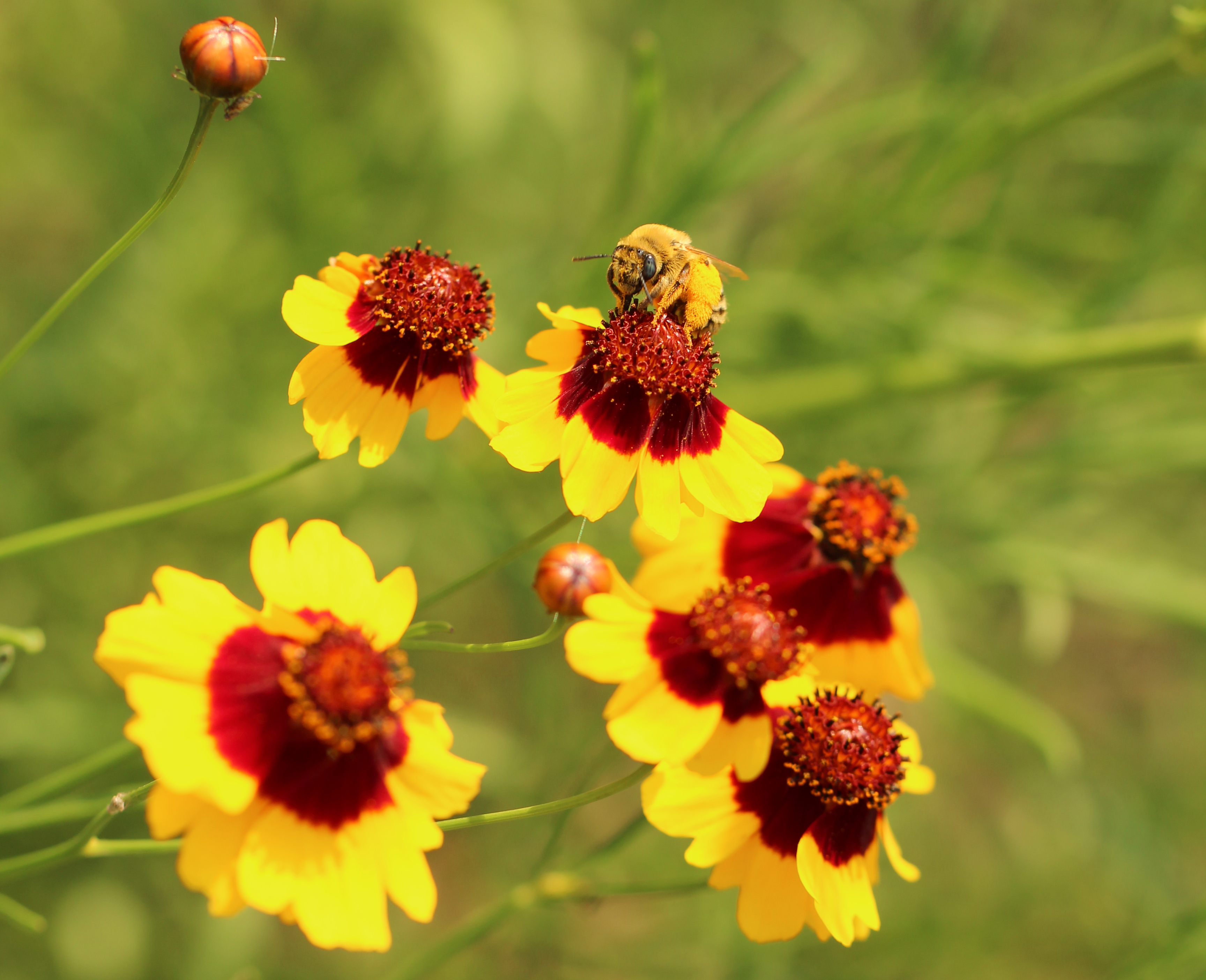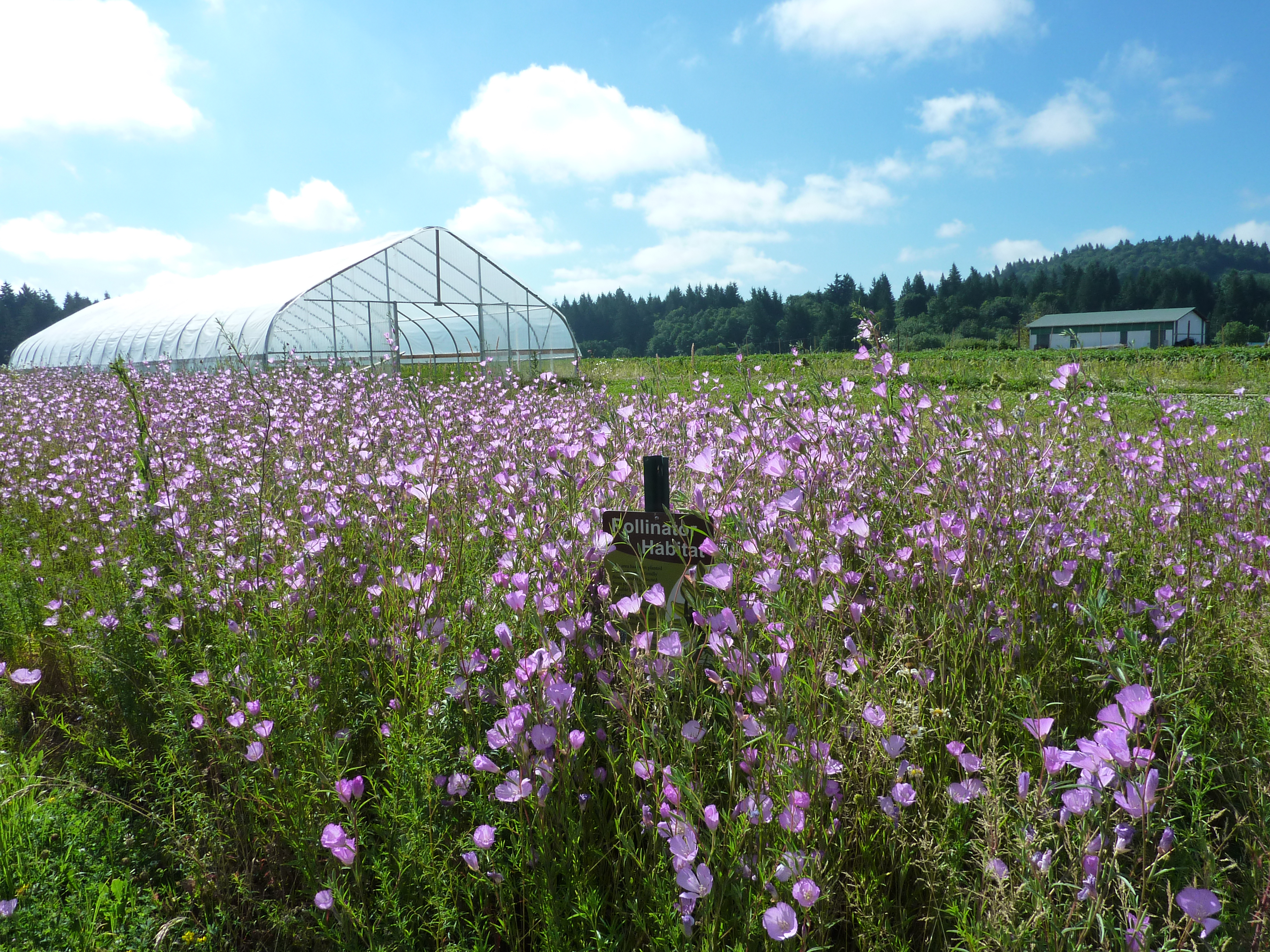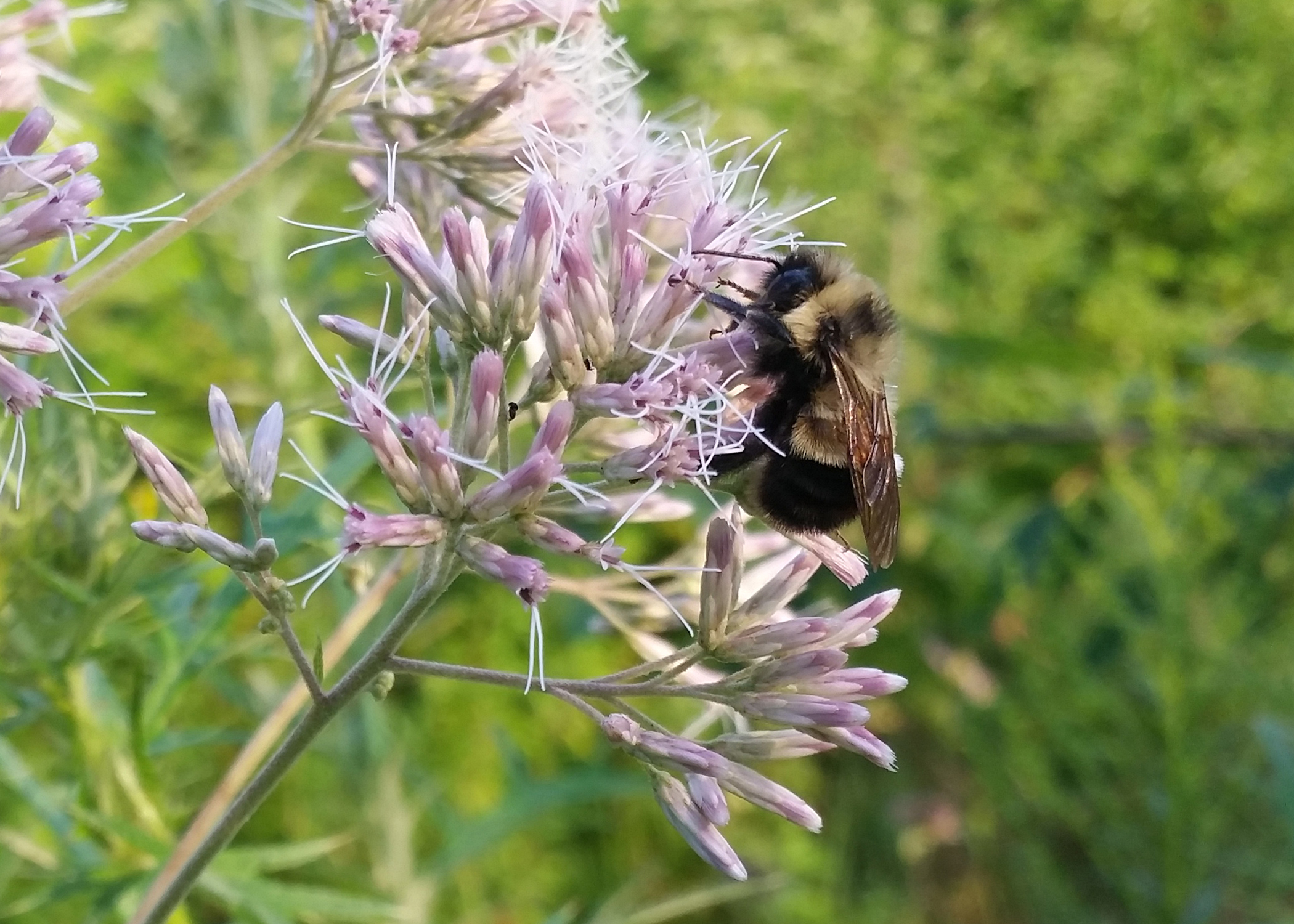Although we did not get everything we wanted in the 2018 Farm Bill, the very good news is that pollinators are still a priority for the USDA and the Natural Resource Conservation Service—and formal commitments to support conservation efforts are now in effect for at least the next five years.
On December 20, 2018, the Agriculture Improvement Act of 2018, otherwise known as the 2018 Farm Bill, became law. The Farm Bill is a multilayered piece of legislation that is revised roughly every five years that addresses a wide array of topics pertaining to agriculture, rural communities, and food systems—including pollinator conservation, pesticide regulation, and habitat restoration in agricultural areas. The far-reaching effects of the Farm Bill have significant implications for the Xerces Society’s work to protect invertebrates.

The Xerces Society and other sustainable agriculture groups see the 2018 Farm Bill as a mixed bag—there are some beneficial aspects and some that will have a negative impact on farmers and conservation. This was well expressed by Juli Obudzinski, Interim Policy Director of the National Sustainable Agriculture Coalition, who said in a press statement prior to the president signing the bill, “Family farmers and sustainable food and farm advocates fought hard for this farm bill, and while there are certainly some provisions with which we are disappointed, we are overall glad to see the bill moving forward and to the president’s desk.”
Collaborating to Support Pollinators in the Farm Bill
Since 2006, we have been honored to collaborate with a broad coalition of nonprofits, as well as several elected officials—including former Senator Barbara Boxer (California) and Congressman Earl Blumenauer (Oregon). For the 2018 Farm Bill cycle, we give special thanks to Senator Jeff Merkley (Oregon) and his staff, who led an effort to promote pollinators and beneficial insects in this Farm Bill. National Wildlife Federation, with whom we recruited 34 conservation and sustainable agriculture groups to sign a letter asking Farm Bill conferees to protect pollinators in the 2018 Farm Bill.
The Xerces Society has worked on the last three Farm Bills to ensure that pollinators and other beneficial insects are recognized and provided with conservation and research funding. A significant success for the 2008 Farm Bill was that Xerces staff and partners were able to include language making all pollinators a “priority resource concern.” This encouraged the USDA to work with farmers, ranchers, and other private land managers to plan and fund pollinator enhancements—such as pollinator meadows, hedgerows, cover crops, and field borders, through conservation programs administered by the USDA Natural Resource Conservation Service (NRCS) and Farm Service Agency. In 2008, we also helped to include language authorizing USDA Specialty Crop Research Initiative grants to fund needed pollinator research. Xerces staff then worked to maintain and strengthen this language in the 2014 Farm Bill.
Xerces Society Goals for the 2018 Farm Bill
Our goals for the 2018 bill were to make sure all of the important pollinator provisions from the last two farm bills were retained, as well as to:
- Reconstitute the federal interagency Pollinator Health Task Force to formalize coordination among federal agencies working to support pollinators across private and public lands;
- Direct the USDA Chief Scientist to facilitate cost-effective research on honey bees and other pollinators by assigning an individual at the USDA to serve as a national honey bee and pollinator research coordinator;
- Encourage pollinator habitat development and protection by increasing our understanding and implementation of strategies that integrate natural predators of crop pests into agricultural systems for pest control—which would represent a new and significant step for sustainable agriculture;
- Ensure that key provisions in the Conservation Reserve Program (CRP) are maintained and improved by increasing acreage without undermining habitat quality and farmer willingness to participate;
- Eliminate provisions that would undermine the Endangered Species Act (ESA) by allowing the Environmental Protection Agency to approve pesticides without consulting the federal agencies charged with protecting listed pollinator species; and
- Eliminate provisions that would undermine the ability of state and local governments to develop pesticide policies that are more protective of people and natural resources than federal regulations.

Outcomes for Pollinators from the 2018 Farm Bill
We are happy to report that we achieved our top priority: maintaining the previous gains for pollinator conservation from past Farm Bills. The final 2018 Farm Bill also had some important additions that will help pollinators and other beneficial insects.
For example, pollinator and beneficial insect research got a boost. The Specialty Crop Research Initiative grant program will now prioritize research into how natural enemy complexes can help with pest management, and thus provide farmers with knowledge that may reduce potential pesticide impacts to pollinators and other beneficial insects.
We were happy to see an increase in the total acreage cap for the Conservation Reserve Program (CRP), and only a minimal reduction in rental rate payments for farmers. This will help protect an additional three million acres of potential habitat. However, we were disappointed to see a decrease in payments for the seeds used in implementing CRP conservation practices. When targeting native pollinator conservation, supporting the use of diverse wildflower seed mixes is important, and sometimes higher-cost seed mixes are necessary for quality restoration, especially to create resilience in the face of a changing climate.

We also appreciate the mandate that the USDA Office of the Chief Scientist appoint someone to coordinate pollinator research within the agency, but we are disappointed that the final bill did not mandate a formal reconstitution of the federal Pollinator Health Task Force. While we anticipate that this task force will continue to operate, we would ask that the USDA’s appointed scientist help facilitate regular meetings of these agency leaders.
Our work with a broad coalition also helped to eliminate provisions that would undermine the ability of the Endangered Species Act to protect pollinators from pesticide exposure, as well as provisions that would have reduced opportunities for state or local municipalities to develop policies more protective of people, pollinators and natural resources.

Priorities of the Farm Bill Authors that Did Not Make It into Law
The Farm Bill, like any major piece of legislation, is the result of months of drafts and revisions as it passed through Congress. Members of both the House of Representatives and the Senate and their staff write drafts, and each house considers it separately and then in “conference” with people from both parties to reconcile differences. At the end of this effort, not everything that was proposed is included in the final bill—but during the conference process, the authors also express their intention for how conservation programs should be administered outside of the actual language of the Farm Bill. Specifically, the authors of the Farm Bill encouraged the USDA to:
- Include pollinator habitat as a priority of NRCS Conservation Innovation Grants;
- Use native plants wherever practical in USDA conservation efforts; and
- Expand upon existing work at the USDA to protect and enhance pollinator habitat through adoption of area-wide conservation plans, increased use of integrated pest management, and implementation of habitat enhancements for beneficial insects.
In sum, although we did not get everything we wanted in the 2018 Farm Bill, the very good news is that pollinators are still a priority for the USDA and the Natural Resource Conservation Service—and formal commitments to support conservation efforts are now in effect for at least the next five years. With Xerces Society pollinator partner biologists working with the NRCS across the U.S., we will continue to collaborate with farmers, agricultural agency staff, and others to implement Farm Bill programs to promote conservation on working lands, and work closely with scientists to best understand what approaches are the most effective for long-term pollinator health. We are thankful that the 2018 Farm Bill provides some key support to continue this multifaceted work, serving the Xerces Society’s mission of protecting the life that sustains us.
Learn more about the Xerces Society’s pollinator conservation program.
Read about more intersections of policy and conservation.



